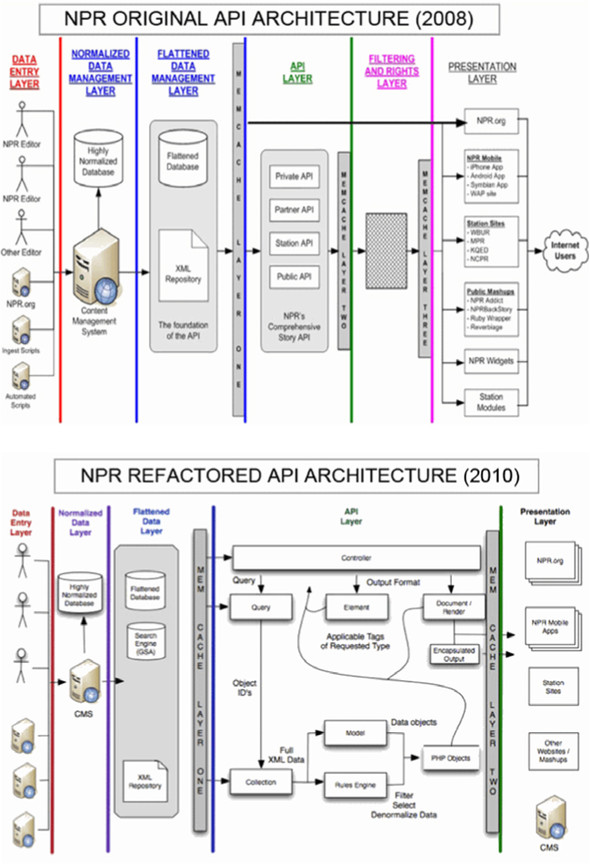Chapter 6. Adding content modules and typography
This chapter covers
- Adding a content module to the layout
- Building thorough demo content
- Adding web fonts using an external content delivery network
A few years ago, the American public broadcaster NPR began to expand its digital channels. At the time, they had a few iOS and Android apps, as well as a website. To serve content to these channels, they created an API that would feed content to a server; the websites and applications would then request articles from that server and pass them to the users as XML files (see figure 6.1).
Figure 6.1. NPR’s original and new API architectures (from http://blog.programmableweb.com/2011/04/18/what-we-did-wrong-npr-improves-its-api-architecture/)

By using this API, NPR only had to change the presentation layer to meet the needs of the different platforms, and they could rely on the XML feed for content. As a result, NPR has developed a robust library of applications that listeners can use to consume content in the format and on the device that they prefer.
Although this example is related to developing a suite of applications, the lesson is important. Content is the substance of everything we do online. Layout is the foundation for the content’s display, but it’s the content itself that the user is visiting for. The formats might change—it might be video, audio, text, or even some sort of experience—but ultimately every visitor is looking for some sort of content.